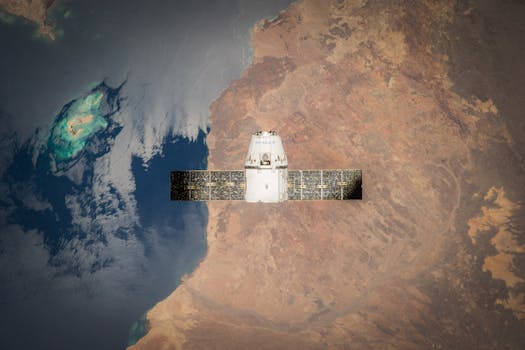
Eyes in the Sky: Advanced Technologies Transforming Earth Observation
Eyes in the Sky: Advanced Technologies Transforming Earth Observation is revolutionizing the way we monitor and understand our planet. With the help of advanced technologies, we can now observe the Earth from space with unprecedented precision and accuracy. This has numerous applications in fields such as environmental monitoring, disaster response, and urban planning.
The use of Eyes in the Sky: Advanced Technologies Transforming Earth Observation has become increasingly important in recent years. Satellite technology has improved significantly, allowing for higher resolution images and more frequent observations. This has enabled scientists to study the Earth’s surface and atmosphere in greater detail, providing valuable insights into the planet’s climate, geology, and ecosystems.
History of Earth Observation
The concept of earth observation from space dates back to the 1960s, when the first satellites were launched into orbit. These early satellites were equipped with basic cameras and sensors, which provided limited information about the Earth’s surface. However, as technology advanced, so did the capabilities of earth observation satellites. The launch of the Landsat satellite in 1972 marked a significant milestone in the history of earth observation, as it provided high-resolution images of the Earth’s surface and revolutionized the field of remote sensing.
Today, there are numerous earth observation satellites in orbit, each with its own unique capabilities and applications. Some satellites are designed to monitor the Earth’s climate and weather patterns, while others focus on monitoring the planet’s natural resources, such as forests, oceans, and soil. The use of advanced technologies such as hyperspectral imaging and synthetic aperture radar has further enhanced the capabilities of earth observation satellites, allowing for more detailed and accurate observations of the planet.
Applications of Earth Observation
The applications of Eyes in the Sky: Advanced Technologies Transforming Earth Observation are diverse and widespread. One of the most significant applications is in the field of environmental monitoring. Satellites can be used to monitor deforestation, track ocean currents, and detect natural disasters such as hurricanes and wildfires. This information can be used to inform policy decisions, develop more effective conservation strategies, and provide early warnings for natural disasters.
Another significant application of earth observation is in the field of disaster response. Satellites can be used to quickly assess damage and identify areas of need following a natural disaster. This information can be used to coordinate relief efforts, deliver aid, and provide critical support to affected communities. The use of earth observation satellites has become an essential tool in disaster response, enabling responders to respond more quickly and effectively to emergencies.
Advanced Technologies
The development of advanced technologies has played a crucial role in the transformation of earth observation. One of the most significant advancements has been the development of small satellite technology. Small satellites, also known as CubeSats, are miniature satellites that are designed to be smaller, cheaper, and more efficient than traditional satellites. These satellites have democratized access to space, enabling more organizations and countries to participate in earth observation.
Another significant advancement has been the development of constellations of satellites. These constellations consist of multiple satellites that work together to provide continuous and global coverage of the Earth. This has enabled the creation of high-resolution images and videos of the planet, providing unprecedented insights into the Earth’s climate, geology, and ecosystems.
The use of artificial intelligence and machine learning has also played a significant role in the transformation of earth observation. These technologies have enabled the automated processing and analysis of large datasets, providing valuable insights and patterns that would be difficult to detect by human analysts. This has enabled the development of more accurate and reliable models, which can be used to predict climate patterns, track natural disasters, and monitor the health of ecosystems.
Conclusion
In conclusion, Eyes in the Sky: Advanced Technologies Transforming Earth Observation is a rapidly evolving field that is transforming the way we monitor and understand our planet. The development of advanced technologies such as small satellite technology, constellations of satellites, and artificial intelligence has enabled the creation of high-resolution images and videos of the Earth, providing unprecedented insights into the planet’s climate, geology, and ecosystems. As the field of earth observation continues to evolve, we can expect to see new and innovative applications of these technologies, enabling us to better understand and protect our planet.